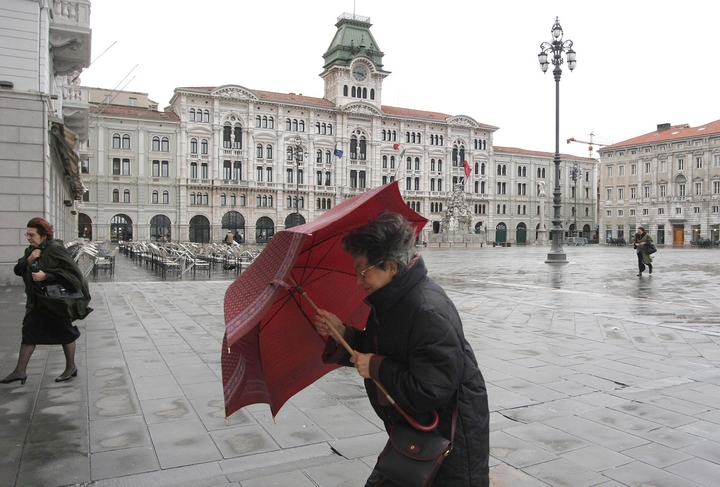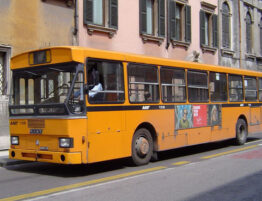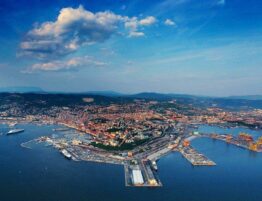
By means of Judgment n. 182/2015, the Court of Trieste rejected the claims for damages made by an insurance company, subrogating the rights of the person entitled to delivery, against a freight forwarder (represented by Alberto Pasino and Federica Fantuzzi), a carrier and a port terminal. The damage involved machinery stowed in two containers that had to be transported from Italy to China. The containers had arrived at the terminal for loading and they had been placed in the yard in fourth row. However, before loading onto the ship, for two days the port was battered by strong Bora wind which reached the maximum speed of 100 miles per hour, causing the containers to fall from their pile and damaging the machinery.
There are various issues that the Court had to deal with in order to come to a decision.
- The first regards the preconditions for the acquisition of carrier’s liability by the freight forwarder. This issue was solved by the Court by stating that in order to prove that the party acting as forwarder also undertook the obligation of performing the carriage, and not only that of entering into a contract of carriage, a number of elements need to be taken into account, including the greater or lesser autonomy granted to the forwarder in the organization of the transport and the fulfilment of the shipper’s obligation to pay the cost of the shipment to the forwarder. Based on these considerations, the Court denied that the forwarder could be held liable for the damage to the goods, and therefore rejected the claim against the Firm’s Client.
- The second issue concerns the limitation period applicable to a transport involving the execution of an ocean leg and of a short inland leg for the transfer of the goods from the shipper to the port of shipment. In this regard, after having noted that the transport under examination was maritime, since “the modest and insignificant phase of the road transfer from the shipper’s headquarters to the port of Trieste had long been completed”, the Court stated the inapplicability of the limitation period provided by the Civil Code, and the applicability of the one set forth in the shipping code, “given the diversity of operators, modes of transport and contracts, as well as regulatory provisions.”
- The third issue, perhaps the most interesting one, deals with the relationship between the contractual and the non-contractual action in respect to damaging events occurred during transport. Such aspect has become crucial, particularly as regards transport and shipping, due to the significant difference in the duration of the limitation periods, which often lead the consignees to try both options, also in the belief that it is thus easier to outline a wide range of liabilities shared by the entire transport chain.
The Judge of the Court of Trieste has considered the aggregation between the contractual and the non-contractual action with regard to damages caused during transport and shipment, as having “dubious dogmatic foundation”, and has pointed out the relationship of subsidiarity between the two forms of liability, in the sense that non-contractual liability, of a more general nature, may be set out only where the conditions for contractual liability are not present. Moreover, according to the Court, the existence of the contractual relationship is a point in favour of excluding aggregation and it exempts from the investigation on the possible existence of another liability, “also and above all because those protective obligations which are here invoked in a non-contractual interpretation by the plaintiff, once subrogated to the rights of the shipper, became in any case prominent in the contractual relationship”. The Judge also adds that the aggregation of actions is to be excluded where, as in the present case, the carriage amounts to a maritime transport governed by the Shipping Code, given the specialty of the sources of maritime law compared to those of common civil law.
- The last issue, the solution of which was essential to check the validity of the non-contractual claim against the port terminal, concerned the possibility of invoking the exempting circumstance of Force Majeure, due to the fact that the damage had been caused by the Bora wind.
The Judge considered, “sporadic – but not exceptional– the fact that the wind reached peaks of 100 miles per hour. It is rarer to witness phenomena that combine intensity with duration, and that, therefore, pound structures and environment relentlessly, with effects which can be dangerous and almost similar to those of a hurricane. However” – the Court continues – “this does not prevent Trieste from continuing to live, and the economic operators from working, if not in the more dangerous situations: simply, precautions are used by those operating in an environment which is exposed to atmospheric phenomena. Specifically, the provisions approved by the port authority were those of not exceeding the fifth row for the vertical positioning of the containers, and to position them with their shorter side facing the direction of the Bora wind […], in order to prevent the containers from giving too much side to the wind”. In the present case, the judge considered that these measures had been diligently taken by the terminal, and therefore dismissed plaintiff’s claim against it.
(Trieste Office – Alberto Pasino – Phone 0039(0)407600281)









